Ever dreamt of getting out into the water with your brand new surfboard, donning your wetsuit, learning how to surf, and catching some waves?
If so, this post might be for you.
We’ve gathered together all of the top quality information on how to surf from the internet, and brought it together in one accessible blog post.
Here, we’ll go over picking the best surf spot, surf gear, how to surf with the right etiquette, the essential advice when catching your first wave, training for surfing, and how to stay safe.
If any of this information sounds like it could be useful to you, keep reading!
Picking the Best Surf Spot
The best surf spots really depend on where you are in the world.
Unless, that is, you’re willing to get on a plane and take a trip somewhere.
For most of you who live in the US, we’ve got some information about the best surf spots in states. Otherwise, we’ve also got the world’s best surf spots.
Best Surf Spots in the United States
Montauk Point, NY
If you live in the New York area, Montauk Point is a perfect place to catch a good break.
If you don’t have a vehicle and have to use the subway, however, I wouldn’t go much further than Rockaway Beach.
Montauk Point is definitely a better break, though. It’s more consistent and overall more stunning than Rockaway Beach.
Sandbars, reef and point breaks can all be found here, and theres something for every surfing style.
Trestles, San Clemente, CA
This is a great break for riders of all abilities. Trestles is a surfing spot that’s made up of lots of small surfing spots, all contained in one large area.
Trestles is located in San Onofre Beach State Park outside of San Clemente, and it divided into three beach regions:
Uppers, middles, and lowers.
Lowers is probably the best known, with beautiful hollow lefts and gigantic rights everywhere you see. In uppers the waves are better for longboarders, and in the middle they’re similar but much less intense.
Most of these spots require a short hike to get to, but trust me, it’s worth it.
Huntington Beach, CA
Here is where you’l find the heart of SoCal Surf Culture.
The beaches here attract crowds of serious surfers for a very good reason: the breaks here are always consistent. These waves get milder the closer you get to the pier, but these can bring a good right swell.
If you’re looking for a thrill, head to The Wedge, in Newport.
World’s Best Surf Spots
Arugam Bay, Sri Lanka
On the East Coast of Sri Lanka, the end of the North East monsoon in the months coming up to may is marked by the ocean producing some of the worlds most perfect sand bars for avid surfers.
The best months for surfing here, in our view, are July, August and September.
It’s also advisable to go surfing in the morning, as it’s less hot, less people in the water, and you get the best swell.
Biarritz, France
If you happen to be in Europe for a bit of surfing, definitely check out Biarritz.
Perfect little waves for longboarding in wide and consistent breaks.
Although not as good waves as Anglet (north) and Guethary (south), the atmosphere is better, and the scenery is more beautiful.
Downside: overpriced and pretentious.
Byron Bay, New South Wales, Australia
Last on our list of the worlds best surf spots to learn how to surf is Byron Bay, Australia.
This spot comes with 4 amazing breaks: The Pass, Wategos Beach, The Wreck, and Lennox Head Point.
The Pass is probably the most well known, with an awesome right hand point, great for longboarders. This would be the best place to learn how to surf on the beach break.
Wategos Beach Is right off from the lighthouse. When conditions are good here, it produces the most fun waves in Byron Bay.
The Wreck, as the name suggests, is a break caused by a shipwreck underwater. It’s a great spot to chill out, and is favoured by locals.
Lennox Head Point is a 20 minute drive, but is known as one of the best point breaks in eastern Australia, so it’s worth a mention.
How to Surf: Surf Gear
First up in our how to surf guide is picking your surfboard. Obviously, you can rent a board for between $10 and $30, depending on where you are, but we definitely recommend getting your own board if you want to improve, fast.
Picking Your Surfboard
You can easily pick up a surfboard online nowadays, but if you can get into a surf store and actually have a feel of the board you’re going to be riding, then that’s much better.

Boards come in all shapes and sizes, ranging from short fish boards, to huge foam and plastic longboards. These can be anywhere from 4 ft to 10-12 ft.

For our purposes to teach you how to surf, we’ll cover foam boards, short boards, and Mini Mal boards.
Foam Board
Foam Boards are normally the easiest board to surf with, due to their large volume.
[amazon box=”B01H6VVWAC,B00BIBXP2A,B01HDZDZPQ” grid=”3″]
Pick up one of these, and you’ll be able to have a laugh on some smaller, longer waves, and practice standing up.
However, you won’t be able to drop into steep waves, or pick up very fast waves without falling.
Short Board
Short boards aren’t so good for learning how to surf, however.
Although in the end they are more fun, and can be used for more tricks, when you’re learning how to surf, they can be very hard to stay standing up on.
[amazon box=”B088QYCD12,B08696QMWN,B086GR84FB” grid=”3″]
They are also a lot more specialised, so sometimes you really do have to do in-store to find a decent shortboard.
Mini Mal
Mini Mal surboards are a really happy medium between plastic and foam boards.
They’re made of a mix of foam and plastic, making them pretty hardy whilst retaining a lot of their volume.

So, they’re quite easy to stand up on, but can handle a lot of abuse and will last a long time.
Because of this they make great first boards to learn how to surf on.
Surfboard Accessories
When it comes to learning how to surf, there are a few important accessories you should pick up for all your surfboards needs.
Surf Wax
Surf wax is important because it treats your board, makes it less slippery to stand up on, and makes it last longer.
[amazon box=”B0053TGSK4″ template=”horizontal”]
Surfboard Bag
A surfboard bag is essential if you plan on travelling with your board, or if you plan on walking any long distance to the beach.
[amazon box=”B07QGVXJGW” template=”horizontal”]
Surf Rack
A surf rack is only essential if you want somewhere convenient to store your board.
[amazon box=”B074CNDQ2S” template=”horizontal”]
Leash
Most surfboards nowadays come with a leash, but just in case, you can pick one up easily on Amazon.
[amazon box=”B01LZRMRG6″ template=”horizontal”]
Picking Your Wetsuit
After buying your surfboard, you’re going to want to make sure you have a decent wetsuit.
However, the type of wetsuit you buy depends on the climate of your region.

Basically, wetsuit’s thickness is measured in mm.
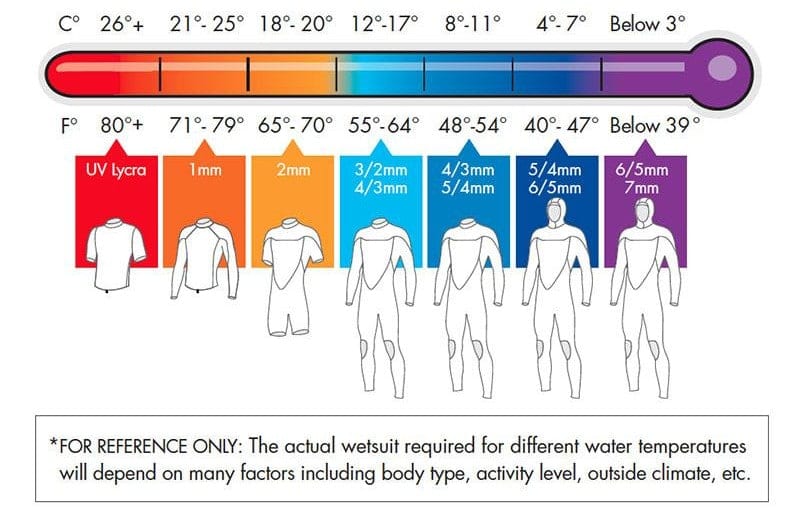
But to simplify this, we think that if you’re in a country of region where the water is a bit colder, get a 4/3, but if you’re in a hot country, get a 2mm or a 3/2 if you’re sensitive to the cold.
If, however, you live in a country with extreme cold, you need to invest in a 6/5 wetsuit, or even better, a drysuit.
Best Warm Weather Wetsuits
Warm weather wetsuits can be nothing but a rash vest, to be fair.
However, it’s also advisable to just get a wetsuit with short sleeves and legs.
[amazon box=”B0070YYXXO,B07PJQP633,B06Y6RWF61″ grid=”3″]
Best Cold Weather Wetsuits
Cold weather wetsuits, on the other hand, should be covering your whole body, and be thick enough to keep you warm, and tight enough to keep the water out.
[amazon box=”B07R2MK16D,B06Y63PBBW,B00CAHMBWQ” grid=”3″]
Wetsuit Accessories
It’s also advisable to pick up some of these wetsuit accessories when you’re learning how to surf.
Although, this is only really necessary in cold weather.
Wetsuit Gloves
Wetsuit gloves are pretty essential if you have bad circulation, or if the water is really cold.
But, if you don’t generally get cold hands or feet, or the water is warm, you don’t need to worry.
[amazon box=”B07PXS3CTF” template=”horizontal”]
Wetsuit Boots
The same goes for wetsuit boots, however, I would argue that they are needed more than gloves in colder water, as you need to feel your feet so you know where they need to go!
[amazon box=”B000V7PH8C” template=”horizontal”]
Wetsuit Cowl
To be honest, a wetsuit cowl is only really necessary in very cold water, however, they can be extremely useful to those of you prone to brain-freeze!
[amazon box=”B000V9JQUA” template=”horizontal”]
How to Surf: Surf Etiquette
Surf etiquette is the next important step when learning how to surf.
People sometimes forget that other people are in the water when they’re surfing, and people can be extremely rude, especially if you steal their wave.
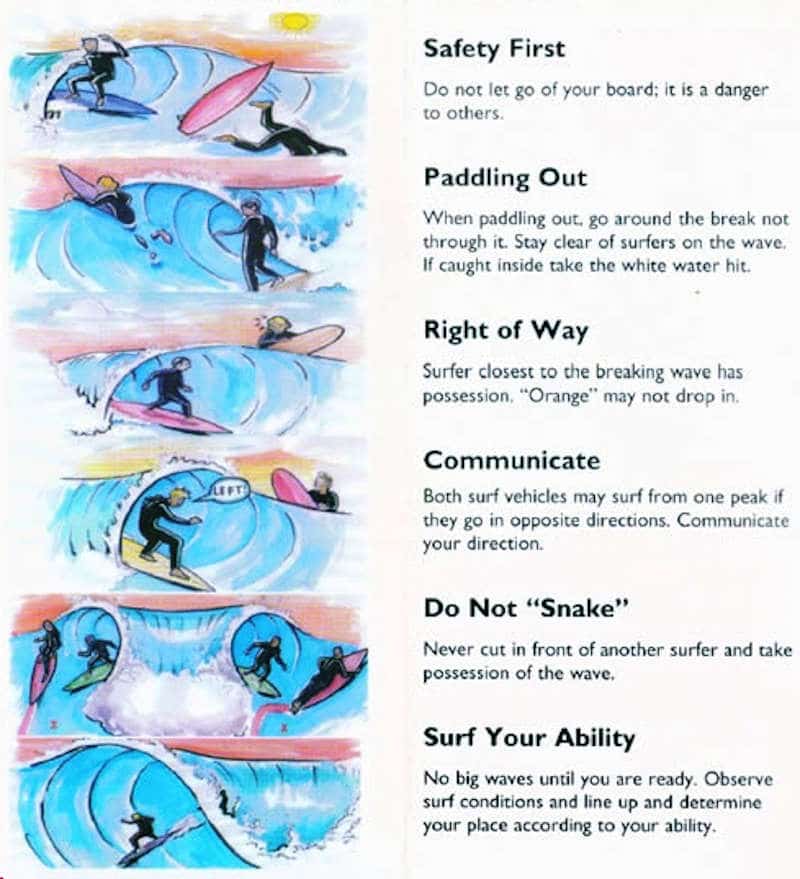
For your benefit, here is a guide to help you learn how to surf with the right etiquette.
How to Surf: Catching Your First Wave
Now, this is the most important bit. It’s quite hard to teach through writing alone, so we’ve included a few helpful videos along the way.
Paddling

Paddling can be pretty tiring, but your body will soon get used to it.
Just make sure you paddle with only your arms, and go slowly. Save your energy for when you’re trying to catch a wave.
A bonus to doing this regularly is that its actually an amazing upper body workout.
Catching the Wave
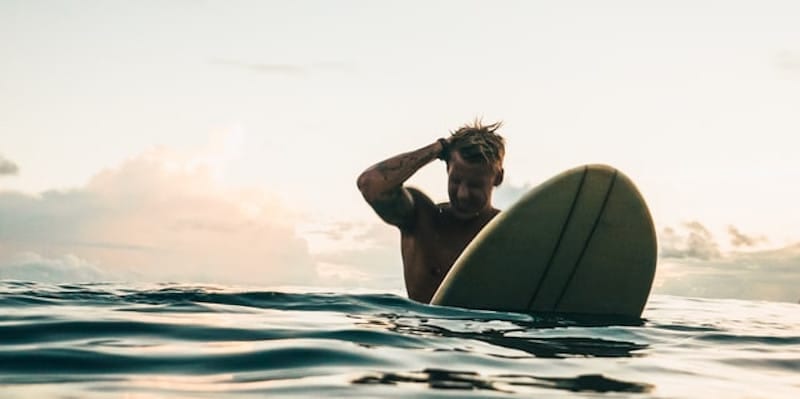
Catching a wave can be the most challenging part, especially if the waves are too big or too small.
If they’re too big, they can take you off too quickly, and if you aren’t ready, you wont be able to pop-up and you’ll fall.
This comes with practice.
If they’re too small, then it can be difficult to get enough momentum to ‘catch’ the wave. This video above is great for showing you how to do this.
The Pop-Up
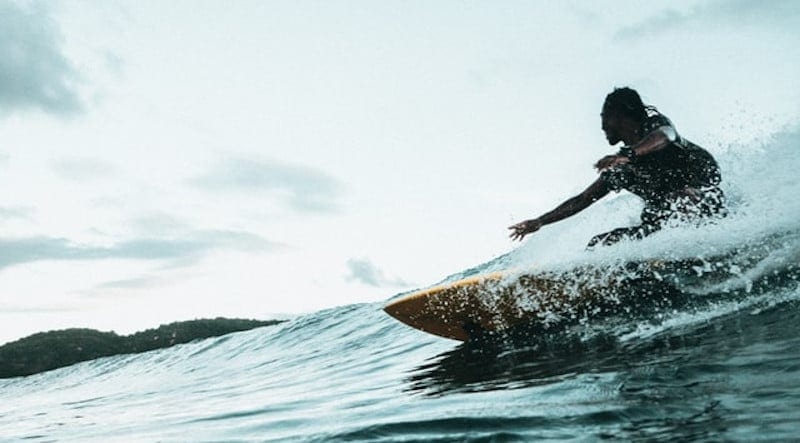
The pop up is one of the most challenging parts of surfing.
In my view, the best way to pop up, as shown in the video above, is to first lie flat on the board.
Then, you want to go into an upward facing dog position, but always keep your eyes forward (this is a general rule in learning how to surf, always look where you’re going).
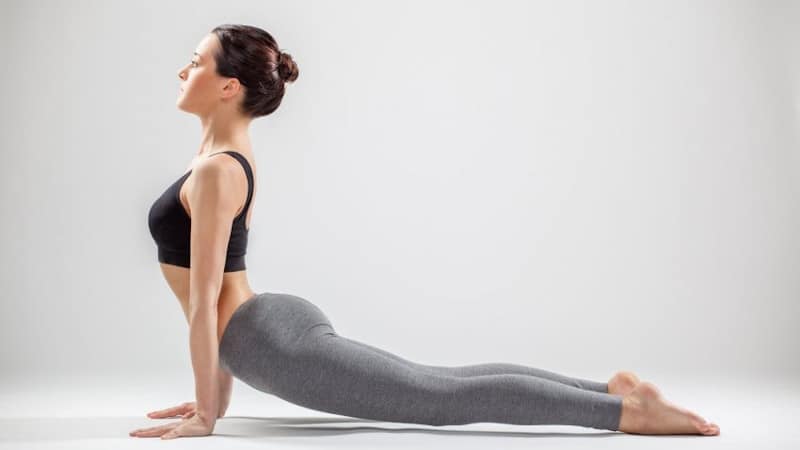
After this, you want to jump up dynamically, sticking your back foot out like a chicken leg (foot facing outwards).
Keep low to the ground, and keep looking forward!
Riding the Wave, and Staying on

All of this is easier said than done, but after you learn how to actually catch the wave, the rest is pretty fun!
Riding the wave is all about direction. Move your body in tiny increments and change the direction you’re looking to move the board. Keep your weight balance, and remember to breathe!
How to Train for Surfing
Training for surfing is pretty straightforward.
When you’re learning how to surf, it’s good to have an excellent overall level of phyiscal fitness, as well as a lot of flexibility.
For that reason, a combination of circuit training and yoga should do the trick.
Circuit Training
Circuit training improves your overall fitness, and for when you’re learning how to surf, there are some surf-specific exercises which will really help your surfing form.
This video goes through some of these exercises.
Yoga
I honestly cannot stress enough how good yoga is for surfing.
It makes you more flexible, increases your muscular strength and endurance, and makes you more patient.
This video includes a great yoga workout for surfing, but I honestly recommend going to take a class somewhere.
How to Stay Safe in the Water
Staying safe in the water is also very important.
Always wear a wetsuit when it’s cold, watch out for jellyfish, be careful with your board, and watch out for other surfers.
Besides this you really also need to be aware of the dangers of the sea.
The main thing is tides and currents.
Be aware of when the tide is going out, because this will drag you out to sea.
Always check there’s a lifeguard on the beach.
If you do get caught in a strong current (a riptide) swim parallel to the shore.
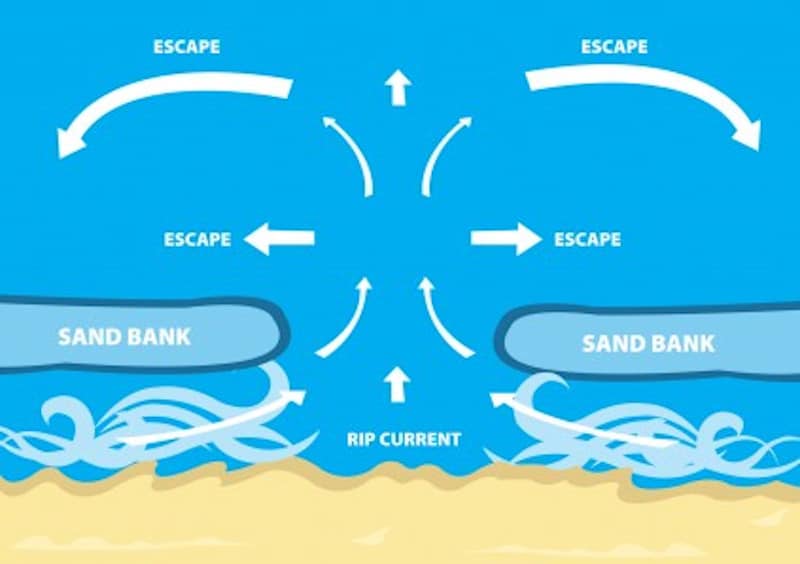
Final Words on Learning How to Surf
So, learning to surf, much like learning to skateboard, can be extremely challenging.
Alongside hiking and trekking, surfing is easily one of our favorite sports. Just like climbing a mountain, it can be very very difficult when you’re first learning how to surf.

The most important thing is that you just remember to always have fun, and stay safe in the water. The rest will come with time.
We’d say that it would take you a good 3 months of regular surfing to really see some decent improvements.
Then, it’s no time before you start catching huge waves.

Welcome to the Active Thrills community! We, Nash and I, are the owners and authors of this special platform. We are so thrilled to say that this is definitely running actively to continue sharing all information and knowledge that we have about skateboarding, extreme sports, and gadgets in order to reach more and more people all over the world.

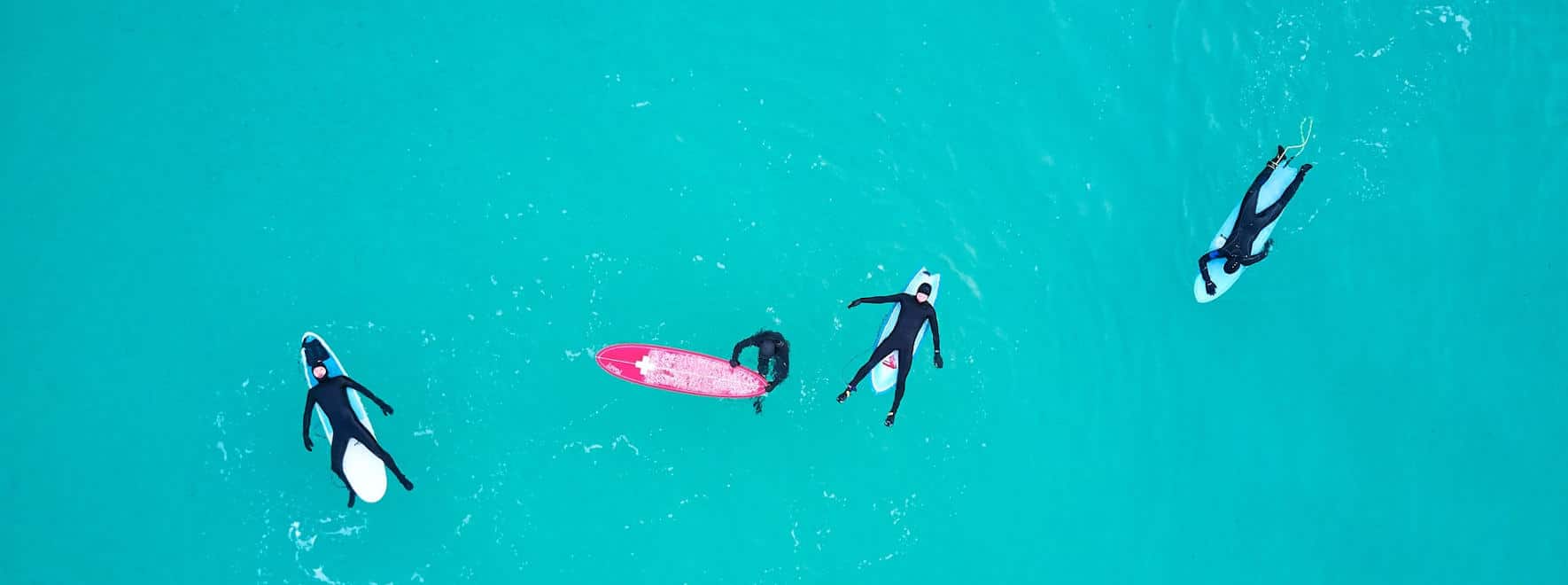
![13 Best Swimming Goggles Reviewed [2018]](https://b2708238.smushcdn.com/2708238/wp-content/uploads/2018/01/swimming-goggles.jpg?lossy=1&strip=1&webp=1)
![5 Best Full Face Snorkel Masks Reviewed [2018]](https://b2708238.smushcdn.com/2708238/wp-content/uploads/2018/02/full-face-snorkel-mask.jpg?lossy=1&strip=1&webp=1)
![10 Best Inflatable Kayaks Reviewed [2018]](https://b2708238.smushcdn.com/2708238/wp-content/uploads/2018/03/inflatable-kayaks.jpg?lossy=1&strip=1&webp=1)